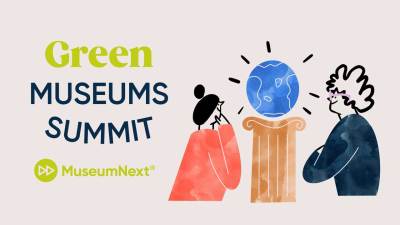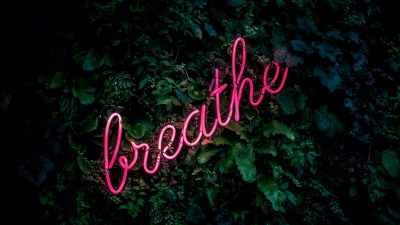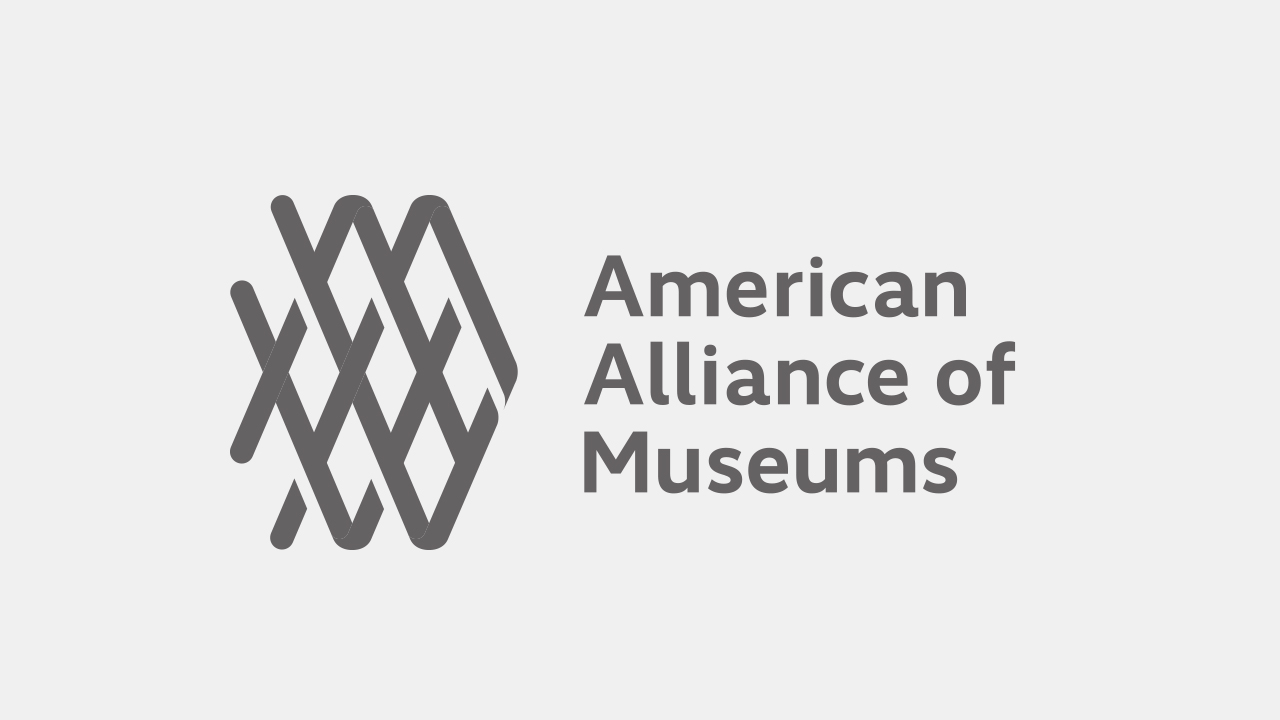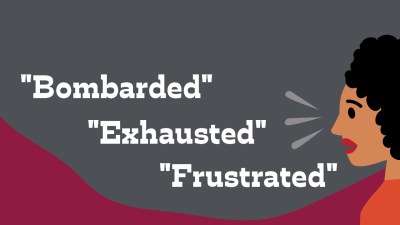
Every week, Dispatches from the Center for the Future of Museums gives you an update on how the future is looking, for our world and for our field. In addition to broad signals of social, technological, economic, environmental, and political change, the newsletter shares regular updates on the new ideas emerging from museums themselves. This year, museums broke ground on a variety of fronts, including new applications of AI, new ethics policies, new approaches to social impact, and new climate-friendly practices. Here is a sampling of the museum stories Dispatches shared this year, one from each month of 2024:
January
One of Charleston’s grandest house museums, Nathaniel Russell House, to be sold
The Post and Courier
The Nathaniel Russell House is among the grandest historic house museums in downtown Charleston, showcasing the vast wealth created in this city following the Revolutionary War, when the cultivation of rice and trade, which included enslaved Africans, had reached a peak. Following a year of strategic planning, Historic Charleston Foundation’s Board of Trustees has decided to divest itself of the Russell House, with protective easements, and use the multimillion-dollar proceeds to: improve its advocacy work regarding development, tourism, and sea level rise; strengthen its Common Cause Loan Fund that helps longtime homeowners remain on the peninsula; and improve outreach and preservation at its other house museum.
February
How Museums, Zoos and Public Gardens Lead by Example on Climate Change
Better Planet
The Phipps Conservatory and Botanical Gardens in Pittsburgh boast some of the world’s greenest buildings. Their star is the Center for Sustainable Landscapes building, which generates all its own energy and captures and treats all its wastewater. To help [other museums] turn their facilities into showcases for environmental action, The Phipps developed a Climate Toolkit with practical advice on everything from energy use to environmentally friendly café meals. Working with partner organizations, the Phipps hosts workshops and facilitates an exchange of ideas among people who run gardens, zoos and museums. There are now 150 cultural institutions using the Climate Toolkit. [The Phipps’] youth climate initiative links young people in Pittsburgh with other groups of young people via museums around the country.
March
Smithsonian moves towards ‘informed consent’ principle for human remains
Museums Association
The Smithsonian Institution in the US is poised to introduce a new policy on human remains that centers around the guiding principle of “informed consent.” The institution has committed to providing resources to proactively trace descendants or communities of origin and empower them to make decisions on what should be done with ancestral remains. The new approach comes after the institution established a taskforce last year to examine its policies on the treatment and care of the more-than 30,000 remains of individuals it currently holds. The taskforce recommended that human remains should not be collected, possessed, or displayed without the “documented and informed consent” of descendants or descendant communities. The report also said that “research on human remains in the custody of the Smithsonian should be restricted to specific purposes, subject to scholarly review and conducted only with the clear, informed consent of the deceased or, in appropriate circumstances, their descendants.”
April
AI-powered Salvador Dalí answering visitor questions at the Dalí Museum
Blooloop
Florida’s Dalí Museum has launched the Ask Dalí experience, allowing visitors to ask the Spanish Surrealist artist questions and receive replies through artificial intelligence (AI). The models have been trained using Salvador Dalí’s writings and archival interviews, resulting in a voice that sounds like the artist’s, and a dialogue that reflects his ideas, imagination and humour. To start a conversation with Dalí, visitors at the museum can simply pick up a phone inspired by the artist’s ‘Lobster Telephone’ (1938) and begin asking questions. The Dalí Museum previously worked with Goodby Silverstein & Partners (GS&P) on ‘Dalí Lives‘, which used AI and machine learning to create a lookalike of the artist. Later, the museum worked with GS&P and OpenAI on the ‘Dream Tapestry’ experience, which allowed visitors to generate images of their dreams through an AI system called DALL-E.
May
The temperature inside these L.A. museums is changing. Why that’s a win for climate action
The LA Times
Museums have historically maintained strict, narrow ranges of temperatures and relative humidity since the British Museum created the standards around 100 years ago. New research and international art conservation guidelines suggest that a wider range of climate controls can be safe for artwork and would significantly cut energy use. The Hammer will pilot expanded temperature and humidity ranges in the PST exhibition “Breath(e): Toward Climate and Social Justice,” which opens in late summer and will feature the work of more than 20 commissioned artists. Michael Nock, the director of exhibitions and publication management at the museum, said the Hammer can establish these new temperature and humidity levels because the art on display is contemporary and because each artist agreed to the conditions.
June
Watching the Future Hatch in the New Museum Incubator
The New York Times
New Inc bills itself as the first cultural incubator to be led by a museum. By the end of this year, New Inc will have graduated 653 people and helped create or sustain 324 businesses since it was formed a decade ago, [as] the brainchild of the New Museum director Lisa Phillips and then-deputy director Karen Wong. It takes its cue from the tech industry, which for the better part of 20 years has had incubators for nascent businesses and accelerators for those that are past the idea-scribbled-on-a-napkin phase. As with tech incubators, the goal is to help people develop a sustainable business model. Applicants are told that, at a minimum, they should come out with basic tools for success: a plan, a purpose, a pitch deck, a mission statement, a website, and a way to make money. These are not things you get from an M.F.A. program, where the focus is on making art.
July
Auschwitz museum working with AI startup to stop hate speech on social media
Blooloop
The Auschwitz-Birkenau Memorial and Museum in Poland has partnered with an AI startup company to tackle hate speech and antisemitism on social media. The startup, TrollWall AI, specialises in the automatic moderation of comments on social media, based on artificial intelligence (AI) models. The museum is followed on social media by nearly 2.5 million people, receiving and receives between 4,000 and 5,000 comments each day. [The museum reports that they] experience daily waves of spam, trolling, phishing bots, or disinformation campaigns. “Appropriate moderation is a priority for us. We strive to protect our virtual community of remembrance from hate speech.” The TrollWall AI tool is currently available on Facebook, Instagram, YouTube, and TikTok. It can moderate comments in many different languages.
August
‘Would a world run by women be a better place?’: Athens museum hosts a bold female takeover
The Guardian
An all-female cabinet faces nuclear crisis. What do they do? Take their threatened country into confrontation, stick with their anti-war principles or give in to the [authoritarian] figure threatening to press the button? These are some of the questions that audiences of Greece’s national museum of contemporary art, EMST, are asked to contemplate. In a global first, EMST’s floors and halls were handed over in their entirety to an all-female cast of artists last month. In such a world, would there have been so much war and conflict, or less chest-beating, more compromise and considered discussion [asks Katerina Gregos, the museum’s artistic director]? Previously just 37% of artists represented in the museum’s permanent collection were women. EMST has been on a mission to break boundaries since Gregos took over three years ago with a determination to use the institution’s public role to tackle issues “that matter”.
September
A museum of formerly incarcerated people opens in Germantown
WHYY
Since being released from prison more than two decades ago for crimes related to drug addiction, Rev. Michelle Simmons has turned her formidable energies into helping other formerly incarcerated women transition back into society. She founded Why Not Prosper, a nonprofit based in a rowhome in [Philadelphia’s] Germantown neighborhood. Since 2001, it has offered support and services to about 1,700 people. Now art and artifacts from those women are on permanent display in a converted storage building behind the rowhome, christened last Friday as the Formerly Incarcerated Renaissance Museum (F.I.R.M.). Some objects on display were used or made by people while incarcerated, as the wall text says, to “help individuals retain their identity.” The collection of materials—hung in a dense salon-style floor-to-ceiling on the museum walls—also features artwork and poetry made by people while incarcerated, and documentation for people who were pardoned and released.
October
World’s first AI art museum to explore ‘creative potential of machines’ in LA
The Guardian
A prominent AI artist has announced he will open the world’s first AI art museum in Los Angeles, which will highlight the “intersection of human imagination and the creative potential of machines”. Dataland co-founder Refik Anadol, 38, is a media artist whose “crowd-pleasing – and controversial” works using artificial intelligence have been displayed around the world. The museum will highlight “ethically collected” datasets, Anadol said, like his Large Nature Model, an open-source, generative AI tool built with data shared by the Smithsonian, the UK’s Natural History Museum, and other prominent institutions. And, as the AI industry faces major scrutiny over the immense amount of energy it requires, Anadol said he aims to be transparent about the energy usage behind the museum’s new tools and technologies. He said he worked with Google to find a sustainable energy park in Oregon to power its AI tools without using fossil fuels, even if that means the process is slower.
November
History Colorado reimagines museum experience through new art
CPR News
History Colorado is transforming how visitors experience the past by integrating work from living artists throughout its exhibitions. A Black mother paints her toddler son, worried about his future. A New Mexican artist’s religious-inspired work hangs next to century-old pieces. These contemporary voices are helping reshape how we understand our shared history. This approach spans all 11 of the museum system’s facilities and historic sites across Colorado. Rather than treating art as mere decoration, History Colorado incorporates it as an essential storytelling tool, particularly when addressing challenging subjects. This integration of contemporary art is also helping rebuild trust with communities historically excluded from museum spaces. The museum’s approach has shifted from interpretation to amplification of community voices. As History Colorado continues this transformation, both artists and museum leadership see art as a bridge between past and present, making historical narratives more accessible and emotionally resonant for visitors.
December
Rijksmuseum launches AI tool to help make connections in 800,000-strong collection
The Art Newspaper
The Rijksmuseum in Amsterdam has launched an AI-powered site combining its art, objects, and research. In 2012, the Dutch national museum was the first major institution to put online its entire collection, spanning 800 years. It now aims to lead the way with artificial intelligence. The Rijksmuseum believes that its Kunstverkenner or “art explorer” project has huge potential, not just to interest people in a real-life visit but to further cultural knowledge. The “art explorer” site asks questions (in Dutch) such as “what do you love?” or “what is your favourite memory?” and allows visitors to collect and compare pieces, or hang them in a virtual gallery. Alexander Klöpping, a Dutch internet entrepreneur who spoke at the presentation, says that the museum’s algorithms are based on sharing knowledge rather than the “strange economic stimuli” of popular video sites, so it has a very different learning potential.
Skip over related stories to continue reading article








Comments